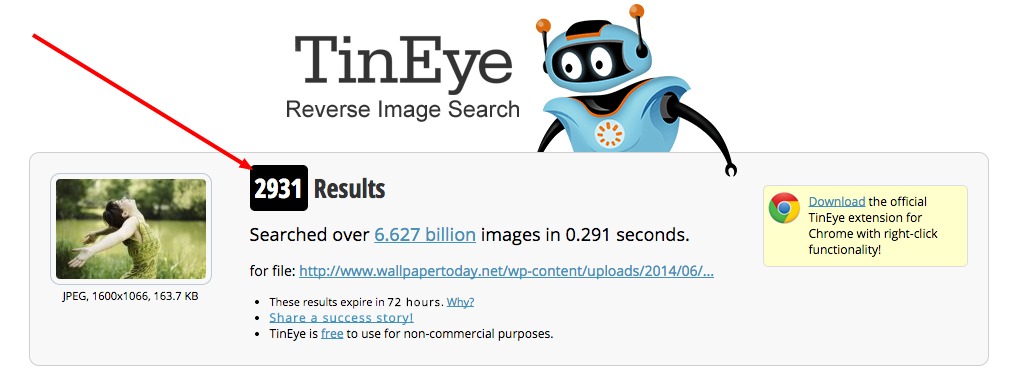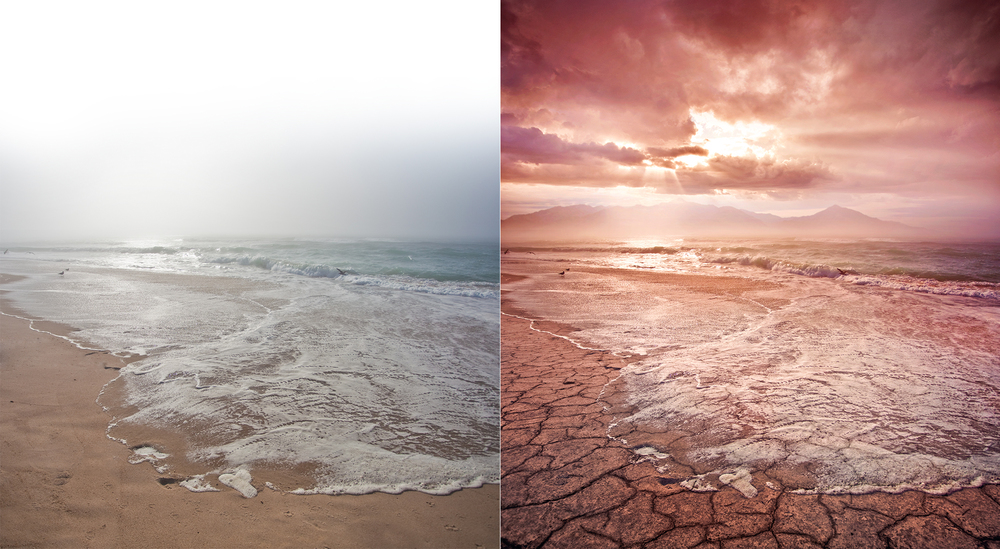When it comes to online imagery, it’s not so much about having images as making sure those images give the visitor a sense of texture, size, scale, detail, context, brand.
According to MDG Advertising, 67% of online shoppers rated high-quality images as being “very important” to their purchase decision, which was slightly more than “product specific information,” “long descriptions,” and “reviews and ratings”:
Table of contents
Joann Peck and Suzanne B. Shu of UCLA published a study called “The Effect of Mere Touch on Perceived Ownership,” which found that vivid and detailed object imagery increased perceived ownership of the product.
Moreover, psychologists Kirsten Ruys and Diedrick Stapel of the Tilburg Institute for Behavioral Economics Research found that imagery has the ability to affect a person’s mood, even when they’re unaware it’s happening.
In their research, they flashed images across a screen in a manner that made it impossible for participants to be fully conscious of what they were seeing. Participants were then tested on cognition, feelings, and behavior.
In the end, the researchers found that participants’ general mood reflected the images to which they were subconsciously exposed.
Should you use stock photos in your website?
No, in most cases using real imagery and authentic photos will convert better than stock photos.
Alright, look, I get it. You’re on a budget. You need an image that represents “freedom” or “happiness” or ::shudder:: “corporate synergy.”
You’ve diplomatically explained to the client that they really should be using custom photography, but they insist that you find a “better/cheaper representation online.” You’ve also gotten that uneasy vibe that they’ll invoke “the customer is always right/I can take my business elsewhere” conversation if you push too hard.
So you go to iStockphoto or Shutterstock, run a query, and try to find the best representation of whatever vague concept you’ve been given as part of the brief.
You pay, download the stock photo, jury-rig it into your design, and look at your work with a mixed sense of pride and shame. But the client loves it! (“See, looks like stock photos weren’t so bad, were they?”)
Now, stock photos have pros and cons, but this is the biggest problem with using them:
Every other poor schmuck in every other vertical has used the exact…same…photograph. And if you’re really unfortunate, one of those other schmucks was also your competitor.
Meet the “Everywhere Girl”
Back in 1996, Jennifer Anderson posed for a stock photo shoot shortly after graduating college. At the time, companies would subscribe to a service and receive their stock photos on a CD-ROM.
Trouble was, the companies receiving the CDs didn’t have an easy way to verify who else was using the photo, and the license for the images was not exclusive—anyone could use them.
Within a few years, Anderson became the face of college girls in what seemed to be every marketing campaign. The most notorious faux pas was in 2004, when competitors Dell and Gateway used photos from the same photo shoot in their “Back to School” promotional material.

But did it stop there? Nope. Other companies used photos from Anderson’s stock shoot, too:
- H&R Block;
- Samsung;
- Microsoft;
- Grayhound;
- U.S. Bank;
- AAA Auto Insurance;
- A series of books about Christianity;
- A teen chat line;
- A car stereo store;
- An actuary website.
Anderson’s image became so common online that there were online communities dedicated to reporting sightings of her around the web.
Below is just a small sample of how frequently photos from this session were used.
Why you have to be careful with how you use stock photos
While Anderson’s story is comical, there are negative connotations for brands that use the same stock photo to represent the same concept.
The main problem is what’s called the picture superiority effect, where “concepts are much more likely to be remembered experientially if they are presented as pictures rather than as words.”
This has to do with Allan Paivio’s “dual-coding theory,” which states that mental associations become stronger when they’re presented both visually and verbally (or through text):
Visual and verbal information are processed differently and along distinct channels in the human mind, creating separate representations for information processed in each channel.
The mental codes corresponding to these representations are used to organize incoming information that can be acted upon, stored, and retrieved for subsequent use.
Theory applies to positive and negative experiences. Americans reported some $3.5 million in losses to online scams in 2019, and many scam sites lean heavily on low-priced stock photography. If you rely on stock photography, odds are that your site uses some of the same photos as scammers.
We already know that when a visitor lands on your site for the first time, everything they see is processed through their working memory—the hyper–short term memory that pulls information from your long-term memory to make judgments on what it sees in milliseconds.
If the stock photo you’re using is at all similar to another website that created a negative experience for the visitor, they subconsciously project their negative experiences onto your stock photos, reducing trust and adding friction to the process.
This is likely the real reason why, when Marketing Experiments tested a real photo of their client against their top-performing stock photo, visitors who saw the real customer were 35% more likely to sign up.
Taken to an extreme, using the wrong stock photography could also result in a form of “mistaken identity.”
Though this article isn’t specific to stock photography, the story of Arizona Discount Movers perfectly illustrates what can happen when the good guys get penalized for something the bad guys did.
Now, not all stock photographs are bad…
…just the designers who use them.
Stock photos can be a quick and effective way to communicate your point, but you should follow a few steps to make sure you’re getting the most out of stock photography.
Step 1: How to tell if a photo is a stock photo.
This is where a tool called TinEye comes in handy to do a “reverse image search” to see where else that photo has been used:


If you get something like “121 results,” take the time to investigate who else has used that image, and how they’ve used it.
If they cater to a similar market and/or have a huge reach, find a different stock photo. The last thing you want is to try to be “unique” by using a photo that everyone’s already seen.
For added peace of mind, go to Google Images and drag the photo into the search bar. Google will pull up all instances of that photo, so you can see if there’s anything that TinEye missed.

Step 2: See if you can get a “Rights Managed” license (optional).
If the image in question hasn’t been used by everyone in the known world, check to see if you can keep that way.
Like the image above states, a rights managed license gives you exclusive use of that image within the markets you specify for a certain time frame.
Even though these licenses are more expensive, they’re insurance against anyone else using your image, thereby preventing an “Everywhere Girl” nightmare scenario.
Step 3: Make the stock photo your own.
Once you’ve found an image that’s (relatively) unused, don’t just publish it and call it quits—make it your own.
Through creative typographic pairings, background manipulations, and the right use of cropping, a photo that screams “boring, generic stock”…
…can become dramatic, creative, and engaging:
If you want to take “making it your own” further, just look at what professional photo-manipulators are doing with stock photography. Often, they combine stock and real photography to create realistic imagery that’s impossible to capture in real life.
For example, artist Night Fate combines stock images to create locations that don’t exist anywhere on the planet.
Images like these can provide a powerful backdrop for a real model or product shot, without having that terrible “stock” feel.
Once you get into manipulating stock photography, the possibilities are endless, as long as you have a strong concept of what the end project should look like.
For example, this album cover was created using stock photography:

As was this photo of a man with a broken, hollow head:

Or, if you really needed something extreme, you could take this picture of a dude standing on a hay bale:
And turn it into complete roadside chaos using nothing but stock photos and Photoshop:

Maybe you won’t end up doing anything that extreme. But it’s completely possible to create some really powerful and unique images with stock photography if you have a strong concept and the Photoshop skills to pull it off.
But really, just take your own photographs
When researching this article, I came across an anecdote of a designer who spent 15 hours searching for the perfect image of a bowl of strawberries—only to remember that his smartphone took amazing photos and a grocery store was right across the street.
It’s easy to take for granted that the last couple generations of smartphones have really upped their game in terms of image quality.
I mean, compare the image above from FreeImages.com to the image below, taken by some random iPhone user in their garden:
This image of my mouse was snapped on my kitchen table in terrible overhead lighting with a mediocre smartphone, yet it’s clear that with a little planning, I could have a shot on-par with what you find on Amazon.

Don’t get me wrong—by all means hire a professional photographer if you can. But don’t blame not doing your own photography on a “lack of equipment.”
This doesn’t just apply to product photos either. If you haven’t gotten pictures of your real staff (or at least your executive team) on the site, what the hell are you waiting for?
Simply put, people pay attention to people who look like real people!
This eye-tracking study by Jakob Nielson shows that photos of real people are often treated as important visual content and are scrutinized:
In contrast, stock photos and obvious “filler content” images are typically ignored:
In case your boss or client is one of those anti-using-real-humans-on-the-website people (oh yeah, they exist) tell them how Harringtion Movers added roughly $10,000 per month to their business when they tested real photographs against cheesy stock people with boxes.
It’s not “technically” hard to create your own photos
The photograph above is from Shopify’s must-read guide on DIY product photography. It was taken with a point-and-shoot camera that cost a couple hundred bucks.
The white background in the photo is called a sweep. Small sweeps for photographing small objects can be made with household materials or purchased for around $35.
Larger sweeps designed for photographing people are less than $40, and a basic studio setup is only $140. That’s all you need to get that basic “white background” look that you see everywhere.
If “real” people are worried that they’re not photogenic enough, show them this video on “Squinching,” which will help them look a million times better (in any photograph).
Now, like I said earlier, if you can get a professional photographer to come in, do it.
They’ll know lot more about lighting, staging, composition, and how to get the most emotion out of the subject being photographed. But if all you need right now is to produce something that looks pretty good (so it’ll sell online), less than $1,000 in equipment and some YouTube tutorials is more than enough.
Conclusion
If you must use stock photography, make sure it’s on brand, not grossly overused, and do what you can to make it your own. Basic and advanced photo-manipulation tactics can transform stock photos into completely unique pieces; they just take a little more time to create.
But don’t be afraid to take your own photos, either. It’s amazing how much quality is packed into smartphones and other less-expensive camera options.
With a little planning and some basic knowledge on how lighting and composition work, you can take unique, high-quality photographs that better represent your brand.

































Bonus: Several Sources Of Great Stock Photography
Here’s a list of some great stock photography websites that regularly update with high quality photography.
If you use images from these sites, please, please, please check TinEye first to see who else is using the photo & how. This can save you a lot of embarrassment down the road.
I haven’t read all of this article, just skimmed through it (going to read in in-depth this afternoon while sipping some tea)
But I’ve personally found that investing in a good DSLR camera and taking good photos increases the share-ability of my articles as well as gives it a more personal feel rather than feeling commercial and fake.
This was an awesome post Tommy! Great information worth a share. I hate stock photos especially when people put them on their websites. Ugh! Really that’s you with that cheesy smile and headset? I know of most of the sites you have listed, which have excellent photos but I always use Canva to spice them up for what I need. You should check out Blogphoto.tv also, they have some great photos.
Take care,
Lillian
Hey guys, great article again. However Diederik Stapel the researcher mentioned in the first section has actually been stripped of his title for fraud. He manipulated research data making his findings questionable at the very least.
All the best!
Oh wow, thanks so much for sharing Karel. I’ll have to update to reflect that.
The best source in my opinion and brand new (just being around for some months):
http://www.dollarphotoclub.com
Every high resolution photo just $1 buck. There’s nothing more to say…
“… kid only costs $225.” Can you really buy a kid that cheap?
Great article! Really nice to see some proof that stock photos really don’t cut it.
This is something I always thought was just a designer’s war on stock photography.
Personally, I would always go for getting your own photos. Nothing beats original ones. Now, it is even easier to take photos with smartphones!
A few years back I was hired as a new marketing director to help rebrand a company. Funny enough one of their most commonly used stock photos for content was the “friend zone fiona” meme girl. At first I thought it was hilarious, then I realized I had to quickly undo what had been done :)
Hi Tommy.
Today i was talking with my coworker (he is marketer) about pic of blog’s post.
And he told me that read articles only if there is a kind of images (and of course title is interesting for him).
What kind of images according to you we should use?
I shown him this blog but just some article he wanted to read… such he didnt see such articles because he didnt find right image.
I ask him… I understood that the image should be inpire an emotion (fear, desire..) or have to be a curious image… and mostly image have to be pertinent with post.
Hi Tommy,
I enjoyed reading this article, both as a photographer/retoucher and as a product designer. The part I would question is about manipulation; the first being to make sure your licence allows for extensive manipulation, and secondly, about the time it will take to create a convincing composite image from 2 or more images. It might be easier/cheaper to buy a dslr and take you own. Or contact someone like myself and talk to me about your project, also at:
http://www.andrewbigwoodphotography.com/
Kind regards
Andrew.
I love this article! Really informative and gives a great understanding about the subject! Double thumbs up!